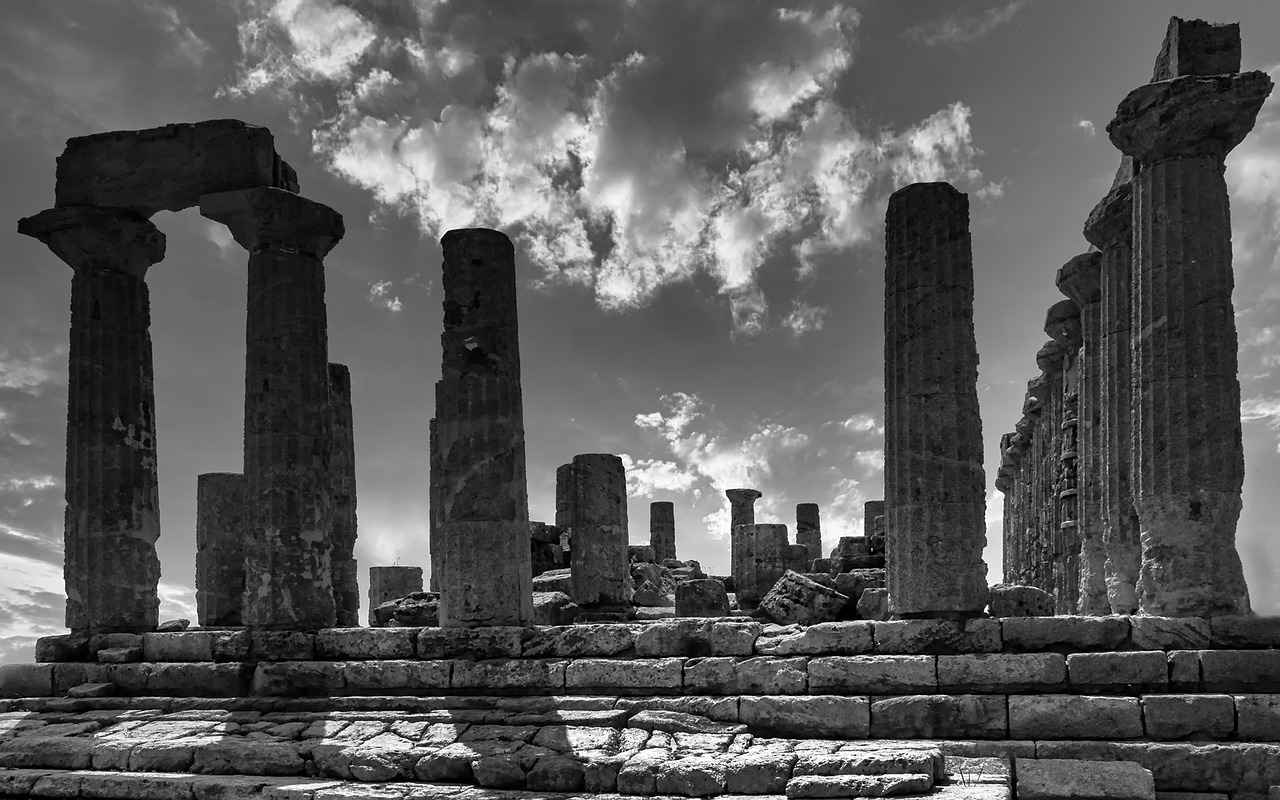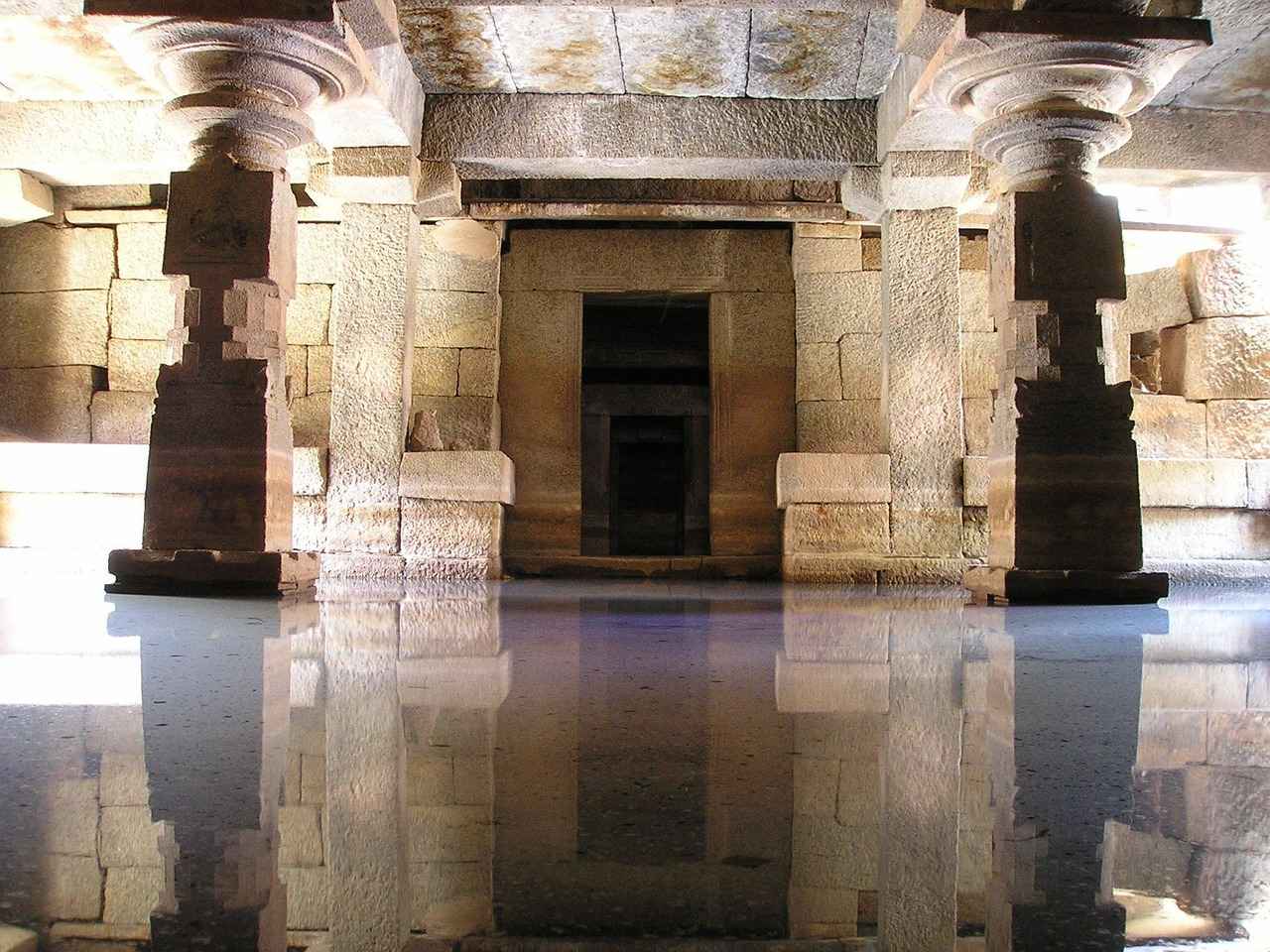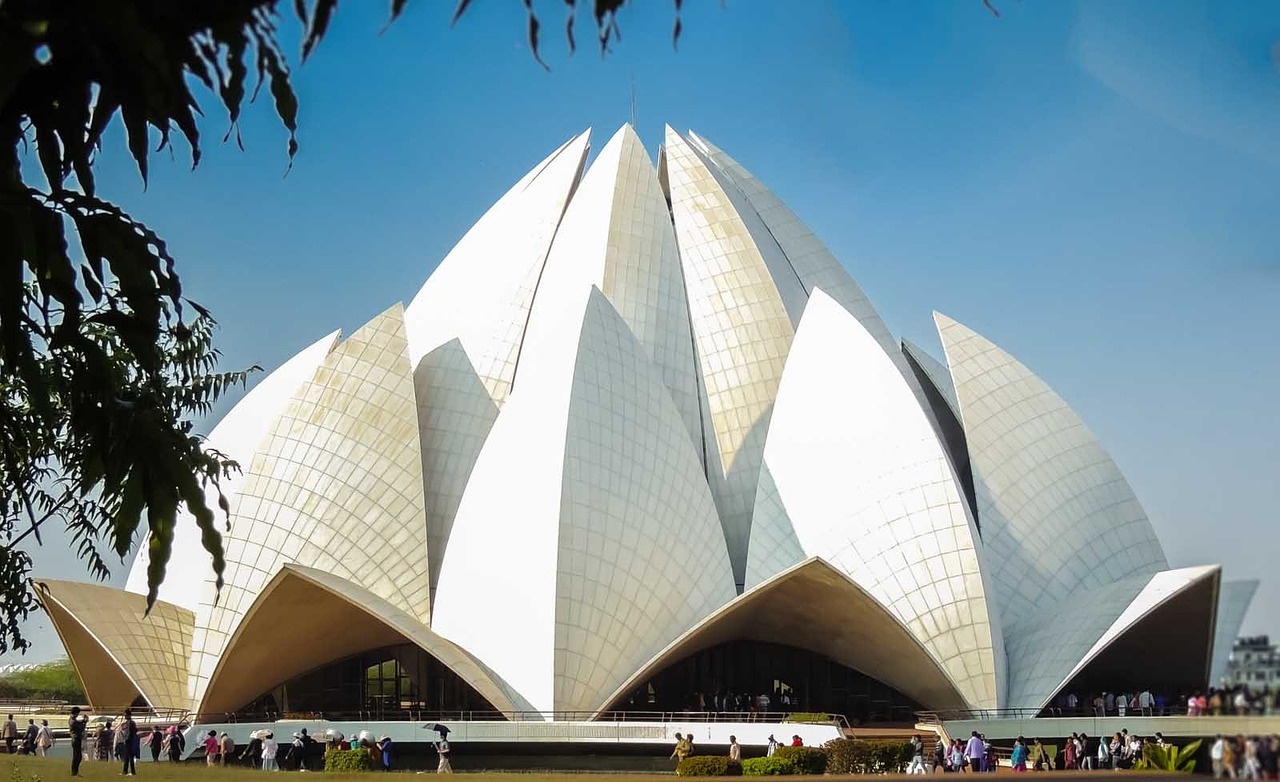This article delves into the enchanting Tarapith Temple, exploring its historical significance, spiritual essence, and the unique experiences it offers visitors in West Bengal.
Historical Significance of Tarapith Temple
The Tarapith Temple is steeped in a rich history, deeply intertwined with ancient legends and spirituality. It is not only a significant religious site for devotees but also a treasure trove for historians. The temple is dedicated to the goddess Tara, a manifestation of Shakti, and is believed to be one of the 51 Shakti Peethas in India. According to local lore, the temple was established in the 16th century, and its significance has grown over time, drawing pilgrims and tourists alike.
Architectural Features of the Temple
The temple showcases a unique architectural style that reflects the cultural heritage of West Bengal. Its intricate designs and craftsmanship are a feast for the eyes, attracting architecture enthusiasts from around the world. The structure features ornate carvings and vibrant murals that depict various deities and mythological stories, creating a captivating atmosphere for visitors.
Influence of Tantric Practices
Tarapith is renowned for its connection to Tantric practices, which offer insights into the mystical traditions that have shaped its spiritual ambiance. The temple is a hub for practitioners and seekers of Tantra, providing a unique perspective on the spiritual journey.
Rituals and Offerings at Tarapith
Visitors can witness various rituals and offerings that take place at the temple, providing a glimpse into the spiritual devotion of its followers. The rituals often involve offerings of flowers, fruits, and sweets, creating a vibrant and colorful atmosphere.
Festivals Celebrated at Tarapith
The temple hosts numerous festivals throughout the year, drawing large crowds and creating a vibrant atmosphere filled with devotion and celebration. Festivals such as Navaratri and Dussehra are particularly significant, attracting both locals and tourists.
Spiritual Experiences for Visitors
Many visitors report profound spiritual experiences while at Tarapith, making it a must-visit destination for those seeking spiritual growth and enlightenment. The serene environment and the energy of the temple contribute to a transformative experience.
Accessibility and Location
Located in the Birbhum district, Tarapith Temple is easily accessible by road and rail, making it a convenient pilgrimage site for both locals and tourists. The temple’s proximity to major cities enhances its accessibility.
Best Time to Visit Tarapith
Understanding the best time to visit can enhance your experience, with specific seasons offering unique insights into the temple’s activities and atmosphere. The months of October to March are ideal for visiting, as the weather is pleasant.
Nearby Attractions to Explore
While visiting Tarapith, consider exploring nearby attractions that complement your spiritual journey, enriching your overall experience in the region. Nearby sites include the Buddhist ruins of Nalanda and the Ajodhya Hills.
Accommodations and Amenities
There are several accommodations and amenities available near the temple, ensuring a comfortable stay for visitors looking to immerse themselves in the spiritual environment. Options range from budget lodges to more luxurious hotels.
Local Cuisine and Dining Options
Sampling local cuisine adds to the experience, with various dining options available near Tarapith that offer authentic Bengali dishes. Don’t miss out on trying machher jhol and mishti doi.
Shopping for Souvenirs
Visitors can find unique souvenirs and religious artifacts in the vicinity, allowing them to take a piece of Tarapith’s mystique home with them. Local markets offer a variety of handicrafts and traditional items.
Conclusion: The Allure of Tarapith Temple
Exploring the Tarapith Temple offers a unique blend of spirituality, culture, and history, making it an essential destination for anyone visiting West Bengal. The temple’s enchanting atmosphere and rich traditions promise an unforgettable experience.

Historical Significance of Tarapith Temple
The Tarapith Temple is not just a place of worship; it is a living testament to the rich tapestry of history and mythology that surrounds it. Nestled in the heart of West Bengal, this temple has been a site of pilgrimage for centuries, drawing devotees and historians alike to its sacred grounds. The temple is dedicated to Goddess Tara, a revered figure in Hindu mythology, and is steeped in ancient legends that add to its mystique.
According to local lore, the temple was established on the site where the body of Sati, the consort of Lord Shiva, fell. The mythological significance of this event has made Tarapith a pivotal location in the Shakti cult, where the energy of the divine feminine is worshipped. This connection to Sati has not only solidified the temple’s religious importance but has also made it a focal point for various rituals and ceremonies that continue to this day.
The temple’s architecture is another aspect that speaks volumes about its historical significance. With intricate carvings and sculptures that depict various deities and mythological scenes, the temple stands as a remarkable example of Bengali temple architecture. The craftsmanship reflects the cultural heritage of the region, making it a subject of study for architects and historians.
Furthermore, the temple is known for its association with Tantric practices, which have been part of its spiritual essence for centuries. Many devotees come to Tarapith seeking not just blessings but also insights into these ancient practices that intertwine spirituality and mysticism.
In conclusion, the historical significance of the Tarapith Temple is multifaceted, encompassing mythology, architecture, and spiritual practices. It serves as a vital link to the past, offering visitors a unique opportunity to explore the depths of its rich history while engaging in a vibrant spiritual experience.

Architectural Features of the Temple
The Tarapith Temple is not just a spiritual haven but also a remarkable showcase of architectural brilliance. Its unique design elements and intricate craftsmanship reflect the rich cultural heritage of West Bengal, making it a magnet for architecture enthusiasts and historians alike.
The temple’s architecture is a fascinating blend of traditional and contemporary styles, characterized by ornate carvings and vibrant frescoes. These artistic details are not merely decorative; they tell stories of mythology and local legends that have been passed down through generations. The use of locally sourced materials in construction adds to its authenticity, providing a glimpse into the traditional building techniques of the region.
- Intricate Stone Carvings: The temple features stunning stone carvings that depict various deities and mythological scenes, captivating visitors with their detail and artistry.
- Vibrant Colors: The use of bright colors in the temple’s murals and decorations reflects the vibrant culture of West Bengal, enhancing the temple’s visual appeal.
- Unique Roof Design: The temple’s distinctive roof structure, often adorned with traditional motifs, is a testament to the skilled craftsmanship of local artisans.
The temple’s layout is designed to facilitate a spiritual journey, guiding visitors through different spaces that evoke a sense of tranquility and reverence. The central shrine, dedicated to the goddess Tara, is adorned with exquisite idols and is often the focal point of worship, drawing devotees from far and wide.
Furthermore, the surrounding landscape complements the temple’s architecture, with lush greenery and serene water bodies enhancing the overall ambiance. This harmonious blend of nature and architecture invites visitors to not only appreciate the temple’s beauty but also to reflect on its spiritual significance.
In conclusion, the architectural features of the Tarapith Temple serve as a stunning representation of West Bengal’s cultural heritage. Its intricate designs and skilled craftsmanship not only attract architecture enthusiasts but also provide a profound connection to the region’s rich history and spiritual traditions.
Influence of Tantric Practices
Tarapith is a unique spiritual destination in West Bengal, deeply intertwined with the ancient and mystical practices of Tantra. This temple is not just a religious site; it serves as a gateway to understanding the esoteric traditions that have flourished in the region for centuries. The temple is dedicated to the goddess Tara, a significant figure in Tantric worship, symbolizing the feminine divine energy and the transformative power of spirituality.
The connection of Tarapith to Tantric practices is evident in its rituals and offerings. Devotees engage in various Tantric rites, which are believed to invoke the goddess’s blessings and facilitate personal transformation. These practices often include mantras, mudras, and yantras, which are essential components of Tantric rituals aimed at achieving spiritual enlightenment.
One of the most intriguing aspects of Tarapith is its spiritual ambiance, which is enhanced by the presence of sadhus and practitioners who visit the temple to meditate and perform rituals. The atmosphere is charged with mystical energy, drawing visitors from far and wide who seek to experience this unique blend of spirituality and tradition.
Moreover, the temple’s architecture reflects its Tantric roots, featuring intricate carvings and symbols that represent various Tantric deities and concepts. This artistic expression not only serves as a visual feast but also as a medium of spiritual communication, inviting visitors to delve deeper into the mysteries of Tantric philosophy.
In conclusion, exploring the influence of Tantric practices at Tarapith offers a profound insight into the mystical traditions that shape its spiritual landscape. Whether you are a seeker of knowledge or simply curious about the esoteric, Tarapith provides a captivating experience that resonates with the soul.
Rituals and Offerings at Tarapith
At the Tarapith Temple, visitors are treated to a captivating display of rituals and offerings that resonate with the temple’s rich spiritual heritage. These ceremonies, deeply rooted in tradition, offer a unique insight into the fervent devotion exhibited by the temple’s followers.
The temple is particularly known for its daily rituals, which include the offering of flowers, fruits, and sweets to the deity. Devotees believe that these offerings not only express their love and gratitude but also invite blessings and prosperity into their lives. The atmosphere during these rituals is often charged with a sense of reverence and communal spirit, as visitors and locals alike come together to participate in these sacred acts.
One of the most significant rituals is the animal sacrifice, which is performed as a part of the Tantric practices associated with the temple. This act, while controversial, is viewed by devotees as a means of appeasing the goddess and seeking her favor. Observing this ritual can be a profound experience, as it showcases the deep-seated beliefs and traditions that have been passed down through generations.
- Morning Aarti: The day begins with a vibrant morning aarti, where devotees sing hymns and chant prayers, creating a spiritually uplifting atmosphere.
- Evening Puja: In the evening, the temple is adorned with lights, and the evening puja attracts many visitors, who come to witness the rituals and participate in the prayers.
- Special Offerings: During festivals, the temple sees an influx of unique offerings, including elaborate decorations and special food items, which highlight the festive spirit.
In addition to the rituals, the temple also serves as a hub for spiritual guidance. Many visitors seek the blessings of the priests, who offer insights and advice based on ancient scriptures. This interaction adds a personal touch to the experience, allowing visitors to connect more deeply with their spiritual journey.
Overall, the rituals and offerings at Tarapith Temple provide a profound glimpse into the spiritual devotion of its followers, making it a must-visit for anyone interested in the rich tapestry of Indian spirituality.
Festivals Celebrated at Tarapith
The Tarapith Temple is not just a spiritual haven; it is a vibrant hub of cultural celebrations that attract thousands of devotees and tourists alike. Throughout the year, the temple hosts a variety of festivals that create an atmosphere brimming with devotion and celebration. Each festival is a unique experience, showcasing the rich traditions and rituals associated with the temple.
- Shyama Puja: This is one of the most significant festivals celebrated at Tarapith. It usually occurs during the month of October and is dedicated to the goddess Shyama, attracting a large number of devotees who come to offer prayers and participate in the rituals.
- Durga Puja: As one of the most celebrated festivals in West Bengal, Durga Puja at Tarapith is a grand affair. The temple is adorned with beautiful decorations, and the atmosphere is filled with music, dance, and devotional songs.
- Kalipuja: This festival, dedicated to Goddess Kali, is celebrated with great fervor. Devotees flock to the temple to participate in the rituals and offer their prayers, creating a sense of unity and spiritual connection.
- Chaitra Mela: Held in the month of April, this fair attracts people from all walks of life. It features local artisans, food stalls, and cultural programs, making it a vibrant celebration of community and spirituality.
During these festivals, the temple transforms into a lively space filled with the sounds of devotional chants, the aroma of offerings, and the sight of colorful decorations. The sense of community and shared devotion creates an unforgettable experience for all who attend.
In conclusion, the festivals at Tarapith Temple not only enhance the spiritual experience but also provide a glimpse into the rich cultural tapestry of West Bengal. Whether you are a devotee or a curious traveler, participating in these celebrations is a must for anyone visiting the temple.
Spiritual Experiences for Visitors
Tarapith Temple, nestled in the heart of West Bengal, is not just a religious site; it is a sanctuary of spirituality that attracts seekers from all walks of life. Many visitors report experiencing profound moments of enlightenment and deep spiritual connection during their time at this sacred place.
Upon entering the temple grounds, one is often enveloped by an atmosphere rich with devotion and tranquility. The energy that flows through the temple is palpable, creating an environment conducive to introspection and meditation. Many pilgrims describe feeling a sense of peace and clarity that they have not encountered elsewhere.
Visitors frequently engage in various rituals and offerings, which are integral to the spiritual experience at Tarapith. These practices not only connect them to the divine but also foster a sense of community among worshippers. Witnessing these rituals can be a transformative experience, allowing individuals to immerse themselves in the rich cultural tapestry of the temple.
Moreover, the temple’s connection to Tantric traditions adds an intriguing dimension to the spiritual journey. Many individuals report feeling a heightened awareness and a deeper understanding of their inner selves after engaging with the temple’s mystical aspects. This unique blend of spirituality and tradition creates an atmosphere that encourages personal growth and exploration.
In addition to the spiritual practices, the temple is often a backdrop for personal revelations. Visitors recount moments of insight and transformation, describing how their time at Tarapith has influenced their lives positively. It is a place where many find the answers they have been seeking, making it a must-visit destination for anyone on a spiritual quest.
In conclusion, the profound spiritual experiences reported by visitors to Tarapith Temple highlight its significance as a place of spiritual growth and enlightenment. Whether you are seeking answers, peace, or a deeper connection to the divine, Tarapith offers a unique journey that resonates long after leaving its sacred grounds.

Accessibility and Location
Situated in the serene Birbhum district of West Bengal, Tarapith Temple is not only a spiritual haven but also remarkably accessible. This temple holds a special place in the hearts of devotees and tourists alike, thanks to its convenient location and robust transportation links.
The temple is easily reachable by both road and rail, making it a popular pilgrimage site. For those traveling by train, the nearest railway station is Tarapith Road, which is just a short distance from the temple. Regular trains connect this station to major cities like Kolkata, Howrah, and Malda, ensuring a steady flow of visitors.
For those opting to travel by road, several state and private buses operate from nearby towns and cities, providing a comfortable ride to the temple. Additionally, taxis and auto-rickshaws are readily available for local transport, making it easy for visitors to navigate the area.
Once you arrive at Tarapith, the temple complex itself is designed to accommodate a large number of visitors, with ample parking facilities and well-maintained pathways leading to the main shrine. The surrounding area is dotted with small shops and eateries, offering local delicacies and souvenirs, enhancing the overall experience.
In summary, the accessibility of Tarapith Temple not only makes it a convenient destination but also invites a diverse array of visitors seeking spiritual solace and cultural enrichment. Whether you are a local or a traveler from afar, the journey to this sacred site is both manageable and rewarding.
Best Time to Visit Tarapith
Understanding the optimal time to visit Tarapith Temple can significantly enhance your experience. Each season offers a unique perspective on the temple’s activities, rituals, and overall atmosphere, making your visit more meaningful.
- Winter (November to February): This is considered the best time to visit Tarapith. The weather is pleasant and cool, allowing visitors to explore the temple grounds comfortably. Additionally, many religious festivals take place during this season, providing a vibrant atmosphere filled with devotion.
- Spring (March to May): As the temperatures begin to rise, the temple sees fewer crowds. This season is ideal for those seeking a more tranquil experience. The blooming flowers around the temple add to its beauty, enhancing the spiritual ambiance.
- Monsoon (June to September): The monsoon season brings heavy rains to the region. While the temple may be less crowded, the weather can be challenging for visitors. However, the lush greenery surrounding the temple creates a serene and mystical environment.
- Autumn (October): This transitional season is marked by the Durga Puja festival, one of the most significant celebrations in West Bengal. Visiting during this time allows you to witness the temple’s vibrant cultural activities and festive spirit.
In conclusion, selecting the right time to visit Tarapith Temple can greatly influence your experience. Whether you prefer the bustling atmosphere of festivals or the quietude of off-peak seasons, each period offers its own unique insights into the temple’s rich traditions and spiritual essence. Planning your visit around these seasonal highlights ensures a more enriching journey.
Nearby Attractions to Explore
When visiting the sacred Tarapith Temple, it is essential to enhance your spiritual journey by exploring the nearby attractions that offer a deeper understanding of the region’s rich cultural and spiritual heritage. Here are some noteworthy places to consider:
- Tarapith Dham: Just a short distance from the main temple, this site is revered for its serene atmosphere and is often frequented by pilgrims seeking peace and reflection.
- Bakreshwar: Known for its hot springs and ancient temples, Bakreshwar is a popular pilgrimage site that attracts visitors looking to experience the healing properties of its waters.
- Amraipur: This quaint village offers a glimpse into rural Bengal life, with its lush landscapes and traditional homes providing a perfect backdrop for relaxation and exploration.
- Rampurhat: A nearby town rich in history, Rampurhat features several historical landmarks and is an excellent spot for those interested in the region’s past.
Each of these attractions not only complements your visit to Tarapith but also enriches your overall experience in West Bengal. Engaging with the local culture and exploring these sites can lead to a more profound understanding of the spiritual significance of the area.
In addition to the spiritual and historical sites, consider indulging in the local cuisine, which offers a variety of flavors that reflect the cultural diversity of the region. From Bengali sweets to traditional meals, the culinary experience is an integral part of your journey.
By exploring these nearby attractions, you will not only deepen your spiritual experience but also create lasting memories that will resonate long after your visit to Tarapith.

Accommodations and Amenities
When visiting the Tarapith Temple, visitors are greeted with a variety of accommodations and amenities that cater to their needs, ensuring a comfortable and enriching stay. The proximity of these options allows guests to fully immerse themselves in the temple’s spiritual environment.
- Hotels and Guesthouses: A range of hotels, from budget-friendly options to more luxurious stays, are available just a stone’s throw away from the temple. Many of these establishments offer amenities such as free Wi-Fi, room service, and guided tours to enhance your experience.
- Homestays: For a more personal touch, homestays are an excellent choice. Staying with local families allows visitors to experience the authentic culture of West Bengal while enjoying home-cooked meals and personalized hospitality.
- Spiritual Retreats: Some accommodations focus on spiritual growth and offer meditation sessions, yoga classes, and workshops on local traditions, providing a holistic experience for those seeking deeper connections.
In addition to lodging, visitors will find numerous amenities that contribute to a seamless experience:
- Restaurants and Cafes: The area surrounding the temple is dotted with restaurants offering a variety of cuisines. Visitors can savor traditional Bengali dishes or enjoy international flavors, catering to diverse palates.
- Shopping Options: Local markets provide an opportunity to purchase souvenirs, religious artifacts, and handmade crafts, allowing visitors to take a piece of Tarapith home with them.
- Transportation Services: Accessibility is a priority, with local transport options such as auto-rickshaws and taxis readily available, making it easy to explore the surrounding regions.
By choosing suitable accommodations and utilizing available amenities, visitors can focus on their spiritual journey and truly enjoy the magic of Tarapith Temple.
Local Cuisine and Dining Options
When visiting the mystical Tarapith Temple in West Bengal, one of the most delightful experiences is sampling the local cuisine. The region is renowned for its rich culinary heritage, which is deeply influenced by Bengali traditions. This adds an exciting dimension to your spiritual journey, allowing you to indulge in authentic flavors that are both unique and memorable.
Near Tarapith, there are a variety of dining options that cater to different tastes and preferences. From small eateries to more established restaurants, visitors can find a range of choices that serve delicious Bengali dishes. Some of the must-try items include:
- Shorshe Ilish: A traditional dish made with hilsa fish cooked in mustard sauce, offering a burst of flavors that is quintessentially Bengali.
- Bhapa Pitha: A steamed rice cake filled with coconut and jaggery, perfect for those with a sweet tooth.
- Chingri Malai Curry: A rich and creamy prawn curry that embodies the coastal flavors of Bengal.
- Mishti Doi: A sweetened yogurt dessert that provides a refreshing end to your meal.
Dining in the area is not just about the food; it’s also an opportunity to engage with the local culture. Many establishments pride themselves on using fresh, locally-sourced ingredients, which enhances the authenticity of each dish. Additionally, the warm hospitality of the locals makes the dining experience even more enjoyable.
For those who prefer to enjoy their meals in a more relaxed setting, numerous cafes and tea stalls offer a cozy atmosphere where you can savor your food while soaking in the vibrant local life. Whether you choose to dine in a bustling restaurant or a quaint street-side stall, the flavors of Bengali cuisine will undoubtedly enrich your visit to Tarapith.
In conclusion, exploring the local cuisine around Tarapith is an essential part of your journey. It not only satisfies your taste buds but also deepens your understanding of the rich cultural tapestry that defines West Bengal.
Shopping for Souvenirs
When visiting the Tarapith Temple, one of the most captivating aspects is the opportunity to engage in shopping for unique souvenirs and religious artifacts. The area surrounding the temple is a treasure trove of items that reflect the rich cultural and spiritual heritage of this mystical site. Here are some highlights:
- Religious Artifacts: Visitors can find an array of religious artifacts, including statues of deities, prayer beads, and ritualistic items that hold spiritual significance. These items not only serve as beautiful decorations but also as meaningful tokens of faith.
- Handcrafted Souvenirs: Local artisans create exquisite handcrafted items such as wooden carvings and textiles that reflect the artistry of West Bengal. Purchasing these items supports local craftsmen and ensures that you take home a piece of the region’s culture.
- Traditional Jewelry: The markets near the temple offer a variety of traditional jewelry pieces that are often inspired by local designs. These unique accessories can serve as a beautiful reminder of your visit.
- Spiritual Books: For those interested in deepening their understanding of the spiritual practices associated with Tarapith, a selection of books on Tantric traditions and local mythology can be found.
Shopping in the vicinity of Tarapith not only allows visitors to take home unique items but also provides insight into the local culture and traditions. As you explore the vibrant markets, you will encounter friendly vendors eager to share the stories behind their crafts, enriching your overall experience.
In conclusion, the act of shopping for souvenirs at Tarapith is more than just a transaction; it is an opportunity to connect with the spiritual essence of the place and bring a piece of its magic back home.

Conclusion: The Allure of Tarapith Temple
Why You Should Explore the Mystical Tarapith Temple in West Bengal
Exploring the Tarapith Temple offers an unparalleled experience that intertwines spirituality, culture, and history, making it a must-visit destination for anyone traveling to West Bengal. Nestled in the serene Birbhum district, this temple is not just a place of worship but a vibrant hub of ancient traditions and rich folklore.
Historical Significance of Tarapith Temple
The Tarapith Temple is steeped in history, with its roots tracing back to ancient times. It is believed to be one of the Shakti Peethas, dedicated to the goddess Tara. This temple has drawn countless devotees and historians who are eager to uncover its mystical past and the legends that surround it.
Architectural Features of the Temple
The temple showcases a unique architectural style that reflects the rich cultural heritage of West Bengal. Its intricate carvings and exquisite designs not only attract pilgrims but also architecture enthusiasts who appreciate the craftsmanship involved.
Influence of Tantric Practices
Tarapith is renowned for its deep connection to Tantric practices. This aspect provides visitors with insights into the mystical traditions that have shaped the temple’s spiritual ambiance, making it a fascinating study for those interested in esoteric practices.
Rituals and Offerings at Tarapith
Visitors can witness a variety of rituals and offerings, which are integral to the temple’s daily life. These practices offer a glimpse into the profound spiritual devotion of the followers and create an atmosphere of reverence.
Festivals Celebrated at Tarapith
The temple is vibrant during festivals, drawing crowds from all over. Celebrations like Durga Puja and Navaratri transform the temple grounds into a lively space filled with devotion and joy.
Spiritual Experiences for Visitors
Many visitors report transformative spiritual experiences at Tarapith, as the temple offers a serene environment that fosters introspection and enlightenment. This makes it an essential stop for anyone on a spiritual journey.
Accessibility and Location
Located conveniently in the Birbhum district, the Tarapith Temple is easily accessible by both road and rail, making it a popular pilgrimage site for locals and tourists alike.
Best Time to Visit Tarapith
Understanding the best time to visit can enhance your experience. Certain seasons offer unique insights into the temple’s activities, with festivals and rituals that showcase its vibrant culture.
Nearby Attractions to Explore
While in the area, visitors can explore nearby attractions that complement their spiritual journey, enriching their overall experience in this culturally rich region.
Accommodations and Amenities
There are numerous accommodations available near the temple, ensuring a comfortable stay for visitors who wish to immerse themselves in the spiritual environment.
Local Cuisine and Dining Options
Sampling local cuisine is a delightful aspect of the visit, with various dining options offering authentic Bengali dishes that add to the overall experience.
Shopping for Souvenirs
Visitors can find unique souvenirs and religious artifacts in the vicinity, allowing them to take a piece of Tarapith’s mystique home with them.
In conclusion, exploring the Tarapith Temple is an enriching experience that offers a unique blend of spirituality, culture, and history. Whether you are seeking spiritual growth, cultural insights, or simply a place of beauty and peace, Tarapith is an essential destination that should not be missed when visiting West Bengal.
Frequently Asked Questions
- What is the significance of Tarapith Temple?
Tarapith Temple is renowned for its deep historical roots and spiritual essence, making it a pivotal site for devotees and historians alike. It is believed to be a place where one can connect with divine energies, especially through its association with Tantric practices.
- When is the best time to visit Tarapith?
The best time to visit Tarapith is during the winter months, particularly from October to February, when the weather is pleasant. This period also coincides with various festivals, enhancing the overall experience with vibrant celebrations.
- Are there accommodations available near the temple?
Yes, there are several accommodations near Tarapith Temple, ranging from budget lodgings to more comfortable hotels. This ensures that visitors can find suitable options to relax and immerse themselves in the spiritual atmosphere.
- What types of rituals can visitors witness at Tarapith?
Visitors can witness a variety of rituals and offerings at Tarapith, including daily prayers, special ceremonies, and unique Tantric practices. These rituals provide a fascinating insight into the spiritual devotion of the temple’s followers.
- What local cuisine should I try while visiting?
While in Tarapith, you must try authentic Bengali dishes, such as shorshe ilish (hilsa fish in mustard sauce) and mishti doi (sweetened yogurt). These culinary delights add a delicious layer to your visit!


























































